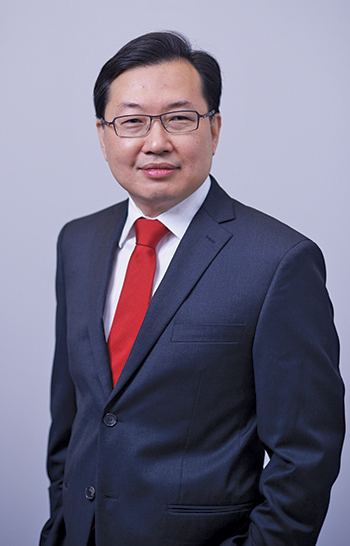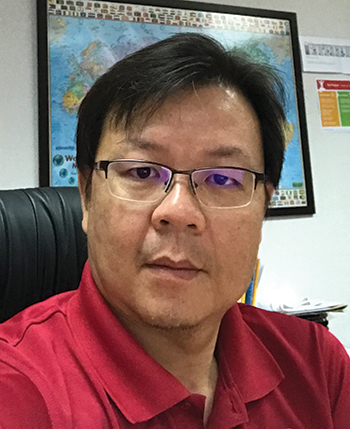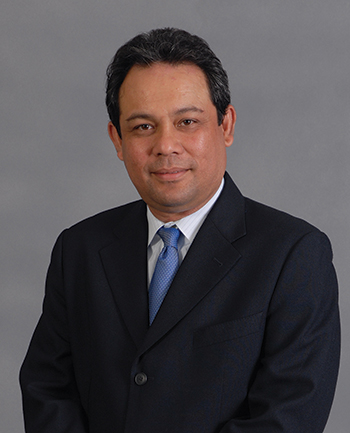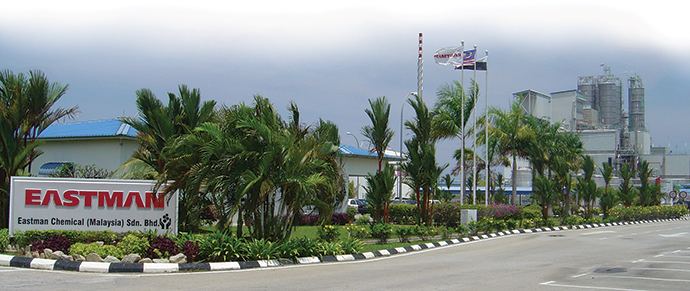The 11th Malaysia Plan 2016 – 2020, Anchoring Growth on People, is charged with bringing Malaysia across the Vision 2020 finish line in just three years. Launched in 1991, Vision 2020 is a framework for transforming Malaysia into a fully developed, high-income country by 2020. This is easier said than done, particularly in trying economic times. But the goal remains, and the 11th Plan will make sure it is achieved with the best interests of the populace in mind.
“The 11th Plan is significant as it will be the last five-year plan before Vision 2020 is achieved,” reads a passage from a document detailing the 11th Plan issued by the Prime Minister’s office. “It provides a crucial platform to ensure that Malaysia transitions to an advanced economy and inclusive nation. Towards this end, the 11th Plan has been formulated with the rakyat [people] as the focal point of all development efforts — to enrich their lives, raise their dignity and enable them to partake in the economic prosperity.”
Three industries — Electrical & Electronics (E&E), Chemicals and Machinery & Equipment (M&E) — are designated “catalytic sub-sectors” in the 11th Malaysia Plan. This means they have strong linkages to other sectors. Parts, components and products of these sub-sectors are used in many applications that cut across various industries, explains Dato’ Azman Mahmud, CEO of the Malaysian Investment Development Authority (MIDA), capital investors’ chief resource for establishing or expanding operations in Malaysia. “It is envisioned that growth in the catalytic sub-sectors will spur further growth of other sub-sectors that are crucial to the nation’s economy.”
The sectors most likely to benefit from growth in the E&E, Chemicals and M&E industries are rubber-based, palm-oil-based and wood-based products, medical devices, textiles, pharmaceuticals, transport, metal, food processing, aerospace and remanufacturing.
What ‘Catalytic’ Means to Industry
What does it mean to be a catalytic industry? Executives from companies in the E&E and Chemicals sectors explain: “The term ‘catalytic industries’ from the 11th Malaysia Plan (2016-2020) particularly pertains to the strategies to revitalize the country’s manufacturing sector,” explains Dato’ Gooi Soon Chai, Keysight Technologies Senior Vice-president & President, Electronic Industrial Solutions Group (EISG). “So, in this context, a catalytic industry means an industry that has the greatest potential to exert the biggest change across the widest portions of the manufacturing sector in the country, which in turn will make the biggest positive impact on the country’s economy.

"The E&E sector in Malaysia has the potential to evolve from being purely an electronics manufacturing hub into a center of excellence for high-value engineering activities such as solutions integration, automation, big data analytics and new technology generation."
— Dato’ Gooi Soon Chai, Keysight Technologies Senior Vice-president & President,
Electronic Industrial Solutions Group (EISG)
“As an E&E company ourselves, as well as an electronics measurement company that is enabling the next wave of technologies, we can attest to how the E&E sector can be deemed catalytic,” he elaborates. “Electronic content is proliferating into everything and in all areas of our lives and industry, largely driven by the advancement of the Internet of Things (IoT). Take for example, the explosion of electronic content in cars that is now revolutionizing the global automotive industry. And the increase in automation, connectivity and data analytics in factories driven by Industry 4.0 and the Industrial Internet of Things (IIoT). We see similar trends across the industries from communications, medical/healthcare, and wearables, to aerospace and defense. So, you can see how the developments and advancements in the E&E sector is shaping the technologies of other industries, and in so doing, become a driving force in defining the entire manufacturing ecosystem. Therefore, it is really appropriate and timely for the Malaysian government to spotlight the E&E industry as a catalyst for growth.”
Soo Lik Heng, Site Manager at Eastman Chemical (Malaysia) Sdn. Bhd., a specialty chemical company, offers his take on the catalytic industry moniker: “In the science of chemistry, a catalyst is a substance that can increase the rate of a reaction,” he notes. “The catalyst itself remains unchanged at the end of the reaction it catalyzes. My understanding of the term ‘catalytic industry’ is an industry that brings significant positive multiplication effects to the upstream, downstream, and supporting industries. The benefits to be designated as a ‘catalytic industry’ include but are not limited to reputation, motivation of the team, readily accessible support from the relevant upstream, downstream, and supporting industries, and increased competitiveness of the company in many ways, directly or indirectly.”
Mr. Soo says Eastman started its first investment in Pahang, Malaysia, in the mid-1990s and over 20 years is expanding its Malaysian facilities from one world scale manufacturing unit to four in the near future. The last two expansion investments are approaching completion.
It is rather a privilege for a sector to be deemed catalytic, says Dato’ Gooi of Keysight Technology, and his organization and others in the industry will benefit. How?
“Obviously, being designated as one of the catalytic industries, we would see more aggressive and purposeful initiatives by the government to advance the E&E sector to the next level,” he relates. “That would mean, firstly, diversifying the sector into higher value technology areas. We know the government is already looking into developing areas like next generation semiconductors, wireless communications, new lighting technologies, solar and green energy, IoT, software and automation, to name a few.
“Secondly,” he continues, “it would also mean developing higher value contribution activities in the sector. So, instead of merely doing product assembly, for example, we would expect activities in the sector to be raised higher to include solutions development, new technology generation, R&D and innovation. Of course, this would be beneficial to the sector as a whole as it would create a richer, more robust, more integrated and a more globally competitive local ecosystem populated with high technology companies, suppliers and design partners as well as a deep and diverse pool of expertise and capabilities.”
As for Keysight, he adds, a thriving E&E environment will greatly contribute to the company’s transformation to become a software-centric solutions company. “There will be vast opportunities for us to tap into this rich ecosystem for the customers, partners and resources that will advance us towards our objectives.”
More Than Mere Incentives
Is it simply a matter of investors accessing incentives tailored to these catalytic subsectors for growth to occur?
“Tax incentives are just another tool to provide a tipping point in promoting investments,” says MIDA’s Dato’ Azman. “We have been focusing more on educating investors about the benefits of the cluster-based ecosystem approach. When Malaysia first started its industrialization after our independence,” he explains, “it was vital to bring in more foreign investments, particularly as they provided the necessary spill-over effects that could grow our domestic companies. As Malaysia moves up the value chain, we are hungry for more innovation-based, knowledge-intensive projects within high-growth, high-value industries.”

"The main themes of innovation, manufacturing upgrades and sustainable growth as part of Malaysia’s 11th Plan (2016–2020) match what we at Eastman are striving for. They are also our key growth drivers."
— Soo Lik Heng, Site Manager, Eastman Chemical (Malaysia) Sdn. Bhd.
MIDA now adopts an ecosystem approach in its investment promotion efforts, by focusing on quality investments that will accelerate and sustain the nation’s economic growth.
“Under the ecosystem approach, concerted efforts have been put in place to promote the entire value-chain of industry clusters and enhance delivery enablers to support the entire value chain,” notes Dato’ Azman. “When a gap is identified in the value chain, MIDA will either lend support to Malaysian companies, or in the event that this is not possible, it will entice relevant foreign investors to fill up the gap.
“A strong and comprehensive ecosystem improves production and logistical efficiency, reduces the cost of doing business and supports greater flow of trade and investments,” he adds. “The approach is also the best way to retain investors, as a strong ecosystem offers a more sustainable reason for companies to remain and grow in Malaysia.”
This has proven to be true, attests Mr. Soo of Eastman.
“With the full and professional support of Federal and State government agencies, such as MIDA and PKNP, Eastman continues to excel in our operations in Malaysia,” he says. “Besides governmental support, Malaysia is a strategic location for Eastman in Asia-Pacific, and the business-friendly systems make it an ideal destination for investments. Moreover, in the fast-growing Asia-Pacific region, we benefit from the developed infrastructure, support from the ASEAN Free Trade Area (AFTA) and Licensed Manufacturing Warehouse (LMW). We also have a readily accessible skilled workforce, ever improving higher-learning institutes, and the strong promotion of productivity, innovation and sustainability, as well as IP protection laws. Eastman’s operations in Malaysia play a crucial role in the company’s success.”
An M&E Force in ASEAN
Malaysia’s M&E industry is among the largest and strongest in ASEAN, according to MIDA. The sector, dominated by small- and medium-sized companies, provides customized products (end-to-end manufacturing — total solution providers, including design and logistics) to meet the strong demand of both local and international companies. In addition, Malaysia is presently the leading manufacturer of specialized process and automation equipment for the electrical and electronics (E&E) industry in the ASEAN region. Around 120 major companies can produce advanced handling systems with full automation, incorporating intelligent robot communication. Players in Malaysia with global recognition include Vitrox, SRM Integration, Visdynamics and Walta Group.

"It is envisioned that growth in the catalytic sub-sectors will spur further growth of other sub-sectors that are crucial to the nation’s economy."
— Dato’ Azman Mahmud, CEO of the Malaysian Investment Development Authority (MIDA)
“The attractiveness of these industrial ecosystems are further reinforced with the availability of business-friendly policies, world-class infrastructure and a sufficient supply of industry-ready talent in science and technical qualifications,” says Dato’ Azman.
The Vision 2020 deadline looms. Will the government meet its goal of transforming Malaysia into a high-income nation by the end of the decade? The catalytic industry executives interviewed for this report are optimistic it will — and know they are in the right sectors at the right time in Malaysia.
“The socio-economic transformation in the country has provided many opportunities for the chemical industry, especially for multinational companies like Eastman,” says Mr. Soo. “The main themes of innovation, manufacturing upgrades and sustainable growth as part of Malaysia’s 11th Plan (2016-2020) match what we at Eastman are striving for. They are also our key growth drivers. With strong confidence in Malaysia’s long-term sustainable future, we at Eastman will continue to optimize our operations and support the country to achieve sustainable and inclusive growth.”
“As far as we can see,” says Keysight’s Dato’ Gooi, “the E&E sector in Malaysia has the potential to evolve from being purely an electronics manufacturing hub into a center of excellence for high-value engineering activities such as solutions integration, automation, big data analytics and new technology generation. At the same time, the E&E ecosystem would also evolve into a robust, integrated local ecosystem where the industry’s key global players are supported end-to-end by globally competitive local design partners, suppliers and contract manufacturers, and a highly talented workforce.”
This Investment Profile was prepared under the auspices of the Malaysian Investment Development Authority. For more information, visit www.mida.gov.my.

